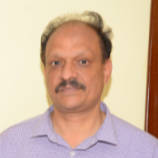
Srinivas Yarramalle
Work place: Department of IT, GITAM University, India
E-mail: hod_it@gitam.edu
Website:
Research Interests: Computer Science & Information Technology, Information Theory, Algorithmic Information Theory
Biography
Dr. Srinivas Yarramalle was awarded M.Tech. in Computer Science and Engineering department in the year 1999. He was awarded doctorate in the year 2008.
His research interests include Human computer interaction, image processing and Software engineering. At present he is working as HOD in the Department of Information Technology, GIT, GITAM University, Visakhapatnam
Author Articles
A Novel Approach for Effective Emotion Recognition Using Double Truncated Gaussian Mixture Model and EEG
By N Murali Krishna J. Sirisha Devi Srinivas Yarramalle
DOI: https://doi.org/10.5815/ijisa.2017.06.04, Pub. Date: 8 Jun. 2017
Most of the models projected in the literature on Emotion Recognition aims at recognizing the emotions from the mobilized persons in noise free environment and is subjected to the emotion recognition of an individual using a single word for testing and training. Literature available to identify the emotions in case of immobilized persons is confined to the results available from the machines only. In this process brain-computer interaction is utilized using neuro-scan machines like Encephalography (EEG), to identify the emotions of immobilized individuals. It uses the physiological signals available from EEG data extracted from the brain signals of immobilized persons and tries to determine the emotions, but these results vary from machine to machine, and there exists no standardization process which can identify the feelings of the brain diseased persons accurately. In this paper a novel method is proposed, Doubly Truncated Gaussian Mixture Model (DT-GMM) to have a complete emotion recognition system which can identify emotions exactly in a noisy environment from both the healthy individuals and sick persons. The results of the proposed system surpassed the accuracy rates of traditional systems.
[...] Read more.Other Articles
Subscribe to receive issue release notifications and newsletters from MECS Press journals